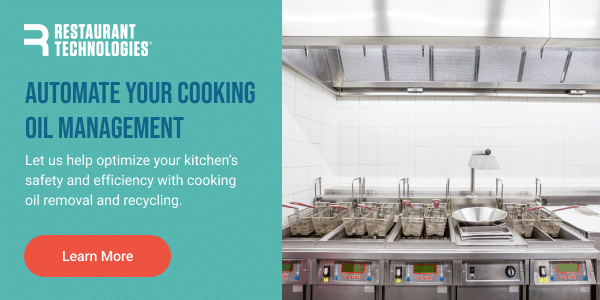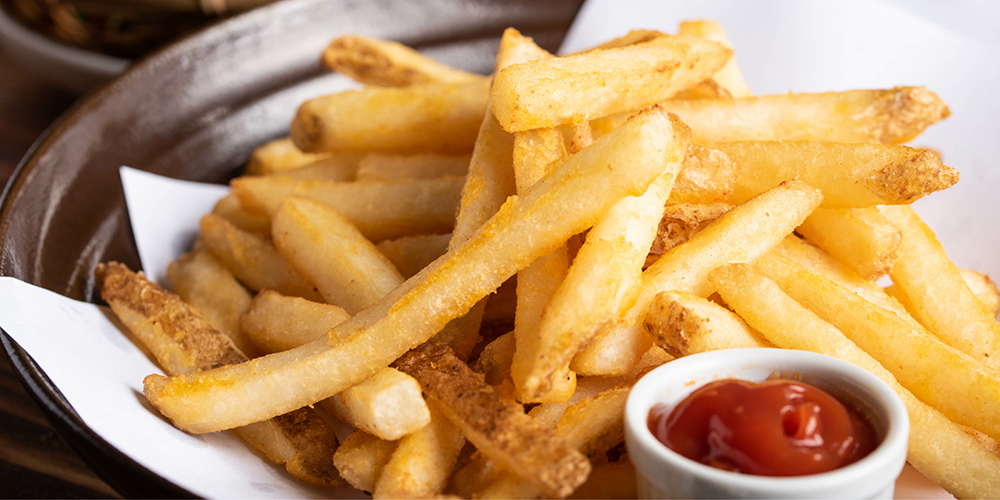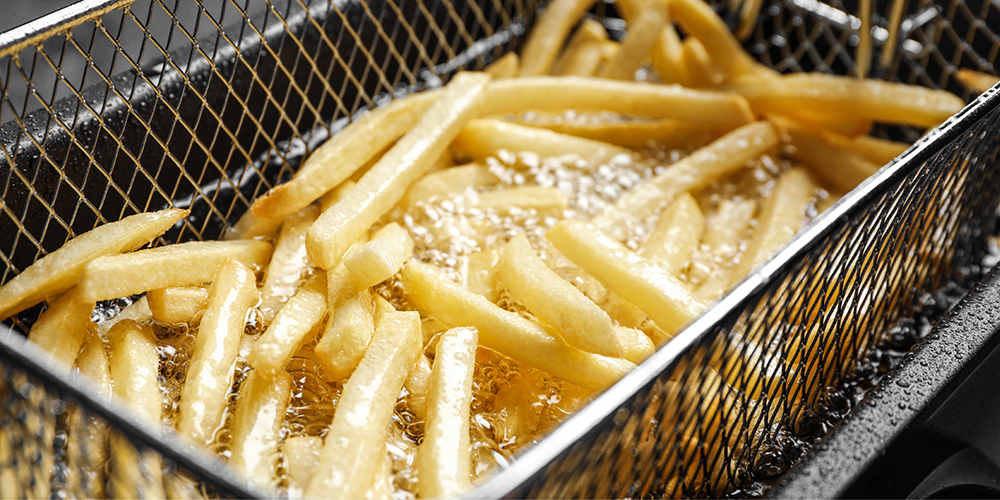Running a restaurant kitchen is no easy task. Orders flood in during peak hours, line cooks hustle to prep ingredients, and servers send out dish after dish. All it takes is one mistake to disrupt the whole chain of operations—losing sales, staff morale, and customer satisfaction in the process.
For modern restaurateurs, this balance between speed and quality often teeters on the edge of a knife. How do you streamline the chaotic dance of a commercial kitchen without sacrificing the art of culinary creation?
Thankfully, there are several ways to improve restaurant efficiency. For commercial kitchens seeking to boost their bottom line, join us as we explore the top four restaurant kitchen efficiency tips and craft the ultimate recipe for success.
The Ingredients: What Makes For an Efficient Kitchen?
Before we delve into the myriad ways to enhance restaurant efficiency, it’s crucial to understand the core components that constitute an efficient kitchen. A well-oiled kitchen operates with precision. Food moves swiftly from prep to plate without mishaps or unnecessary delays, ensuring a smooth operation that feels almost choreographed.
Let’s briefly review the four factors we’ll be discussing that contribute to an efficient kitchen:
- Training and managing cohesive teams – Both front-end and back-end staff are essential for efficiency in restaurants. Every step is ultimately guided by team members—from seating to serving and everything in between—making comprehensive management a key factor. Finding the ideal kitchen manager can lead to further back-of-house efficiency.
- Optimizing your kitchen layout – The physical layout of the kitchen equipment itself also contributes to overall restaurant efficiency. Strategic placement of appliances and ingredients minimizes cooking time and the possibility of accidents while working with hot dishes and sharp objects. Setting aside a prep area for plating can further improve your restaurant kitchen layout.
- Employing essential tools and technologies – Technology offers new and revolutionary ways to improve restaurant efficiency. From automating repetitive manual tasks to using quality equipment for safer, faster food handling, the right tools can put kitchen staff a step ahead. Automating restaurant cleaning procedures can further enhance your restaurant’s efficiency.
- Eliminating efficiency bottlenecks – Properly addressing operational bottlenecks, such as refilling and disposing of cooking oil, is a crucial step towards maintaining a smooth workflow in the kitchen. Additionally, placing a staff member in charge of inventory management can improve operational efficiency by preventing unnecessary food waste, saving your business time and money.
When these elements come together, kitchen staff can better utilize their time and resources for high-priority tasks, such as perfecting the food or providing guests with a premium experience.
Of course, these ingredients are just the foundation. As with cooking, it’s how they’re used that makes the difference.
#1 Mix Well: Effectively Manage and Train Your Team
Team members are the foundation for efficient operations. Their blend of skill, passion, and dedication come together to create a harmonious dining experience for customers from start to finish. An effective restaurant manager will help guide your team, leading to streamlined food preparation, customer service, and food safety.
To leverage the diverse strengths and preferences of the team, managers need to skillfully align individual capabilities with the restaurant’s operational demands. Open and clear communication is essential, not just between management and staff but also among the team members themselves, bridging the front and back of the house. Additionally, exploring different restaurant safety tips can arm you with important teaching material to keep your employees safe.
Here are a few suggestions for efficient staff management:
- Clearly define all roles, cutting through ambiguous or overlapping responsibilities. Ensure each team member knows not only their
- Implement cross-training to give everyone a broader understanding of restaurant operations. This further helps individuals play their part in the larger team effort, while also fostering flexibility for when certain roles need to be covered. Training staff in restaurant fire safety will also help prevent burns in the kitchen, allowing for more customers to be served.
- Craft strategic schedules that not only cover all necessary roles during busy times but also allow for some overlap to avoid any downtime. Establish a straightforward shift handover process to prevent any disruption in service or overlooked orders.
With proper training and scheduling, team members feel valued and impactful in their positions. These benefits ultimately trickle downwards, contributing to enhanced productivity and more efficient performance overall.
#2 Plate with Precision: Make the Most of Your Kitchen Space
A cluttered or disorganized kitchen layout can quickly bog down your team. One restaurant’s motion study concluded that their team members were walking up to a full mile extra due to an inefficient kitchen design.1
Clearly, optimizing your kitchen’s layout is crucial for maximizing efficiency and productivity. Here are some tips and strategies to help you make the most of your kitchen space2:
- Maximize vertical storage – Utilize wall-mounted shelves, hooks for lids and utensils, and other vertical storage solutions to free up valuable counter and floor space. Vertical storage in walk-in freezers will also improve restaurant operations by keeping inventory organized and easy to access.
- Incorporate automation – Employing automated kitchen systems (more on that below!) not only saves space but also streamlines operations, allowing staff to focus on tasks that require a human touch.
- Adopt visual organization – Strategies such as color-coding utensils, pots, food storage bins, and other items can help cut down on hunting time so staff can find items quickly. Clearly labeled stations and prep checklists posted in relevant areas can further reinforce organization and support smoother transitions for new hires.
With an intentional layout optimized for workflow, staff can operate productively even in a smaller kitchen.
#3 Whisk Until Smooth: Integrate Kitchen Automation
To truly maximize efficiency in today’s busy restaurant kitchens, making use of new technologies is an essential step.
Consider the difference between manually mixing your batter and using a stand mixer. The latter works to save you time and energy, all while ensuring a consistent, smooth mix every time. Similarly, automated kitchen tools can transform tedious tasks into efficient processes, boosting staff morale and positively impacting the bottom line.

Some examples of kitchen automation include:
- Devices that can chop, stir, or grill with precision, reducing the need for constant supervision
- Automated systems that streamline the ordering process, ensuring each order is correct and thereby reducing food waste and wasted time remaking a dish
- Web or app-based solutions that simplify inventory tracking and ordering, keeping the kitchen well-stocked without excess
Adopting these technologies may require some adjustment time for staff, but the benefits—increased efficiency and a competitive edge—are well worth the effort.
By integrating automation and innovative tech, restaurants can streamline operations while simultaneously enhancing the quality and consistency of their culinary offerings. Consider exploring other restaurant efficiency tips that can improve your business’s self-sufficiency.
#4 Deep Fry: Incorporate a Total Oil Management Solution
Amidst the bustling environment of restaurant kitchens, managing cooking oil is often a major point of inefficiency. Changing messy waste oil and refilling fryer vats can pull team members away from other, more productive tasks—not to mention the safety risks involved. Understanding how to dispose of used cooking oil is essential for ensuring the safety of your food and staff.
Implementing a total oil management solution revolutionizes this process. With this system in place, fresh oil is pumped in directly from an external storage tank, and old oil is safely pumped out through enclosed lines. If you prioritize environmentally friendly solutions to oil disposal, consider the benefits of recycling used cooking oil.
Consider just a few advantages of automating your oil management:
- Improved oil quality – Web-based monitoring systems and preinstalled filters can extend the oil’s usable life, ensuring fried foods are always crispy and crave-worthy.
- Cost savings – Efficient oil management reduces waste, frees up team members to focus on food prep and cooking, and can contribute to lower oil-related expenses over time.
- Safety and cleanliness – By automating oil handling, the risk of accidents related to hot oil is significantly reduced, promoting a safer and cleaner kitchen environment.
- Environmental responsibility – Proper oil disposal methods are part of the sustainability solution, helping restaurants reduce their environmental footprint.
With the right commercial cooking oil management solution, restaurants can experience noticeable improvements in both food quality and back-of-house efficiency, optimizing the fryer station from start to finish and avoiding pouring oil down the sink. Additionally, some customers might be wondering what happens to used cooking oil from restaurants. Providing them with a brief explanation can sate their curiosity and make them feel more confident in their dining experience.
#5 Add Garnish: The Final Touch for Exceptional & Efficient Service
In the hustle of efficiency, it’s important not to lose sight of what makes dining out special: the overall experience of the service, from the host who kindly accommodates your special request to the server who recommends an entrée you’re sure to love.
This personalization acts much like a garnish on a traditional dish. While it might not change the flavor, its impactful presentation can transform an otherwise simple meal into an unforgettable delight.
To do the same for your restaurant guests, consider providing focused training for front-end staff specifically on how to incorporate customer-first culture into every interaction. This training makes memorable moments and personalized interactions a standard part of the dining experience rather than the occasional surprise.
Such personalization strategies are also proven to be directly linked to increased revenue growth, putting your business ahead of almost half the competition.3 In this way, not only do you maintain efficiency, you do so without sacrificing quality.
Serve Immediately: Eliminate Inefficiencies with Restaurant Technologies
As we’ve seen, there are many avenues for restaurants to pursue greater efficiency. Revamping layouts, clarifying staff roles, and implementing automation can all streamline chaotic kitchens. But where should you start?
An easy first step is to eliminate oil handling inefficiencies with Restaurant Technologies. With our Total Oil Management Solution, we take the burden of transporting, filtering, changing, and recycling oil completely off your staff’s shoulders.
With benefits to your bottom line, kitchen operations, and sustainability, Restaurant Technologies is the ideal partner for any restaurant seeking ultimate efficiency—without sacrificing safety or quality.
We know running a restaurant is no easy task. Contact us to see how we can take oil management off your plate, so you control the kitchen, not the other way around.
Sources:
- Nation’s Restaurant News. How Checkers & Rally’s plans to adjust as other brands adopt its double drive-thru model. https://www.nrn.com/operations/how-checkers-rallys-plans-adjust-other-brands-adopt-its-double-drive-thru-model
- Contek Pro. Commercial Kitchen Design: 7 Tips for Maximizing Efficiency. https://www.contekpro.com/blog/commercial-kitchen-design-tips
- Medium. The psychology of personalized marketing — and why it’s like catnip for customers. https://medium.com/choice-hacking/the-psychology-of-personalized-marketing-and-why-its-like-catnip-for-customers-26550c258a3c
- The Restaurant Times. Restaurant Staff Training To Improve Efficiency in 2023: A 9 Step Guide. https://www.posist.com/restaurant-times/restro-gyaan/9-effective-ways-to-increase-your-restaurant-staff-efficiency.html
- Lightspeed. How to Improve Restaurant Efficiency. https://www.lightspeedhq.com/blog/restaurant-efficiency/







